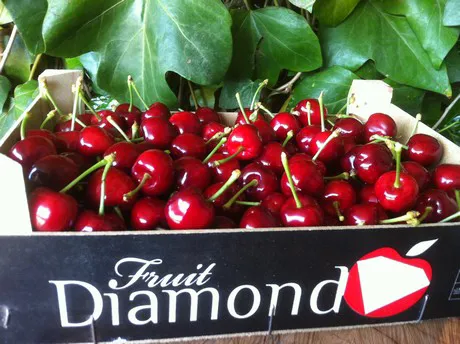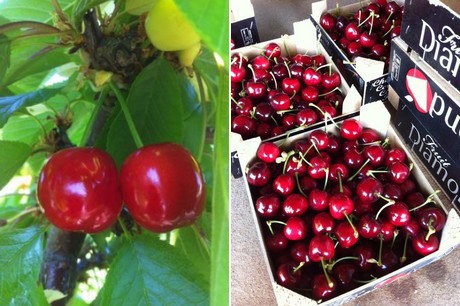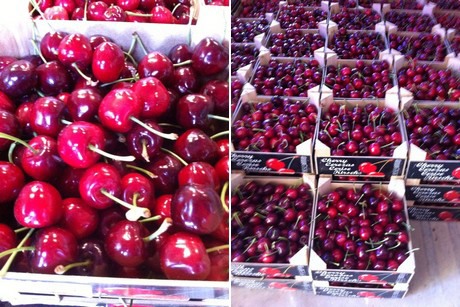The cherry campaign in the production area of Mequinensa, in the Spanish province of Zaragoza, officially started yesterday for the company Fruit Diamond. The campaign started with the launch in the Spanish market of the first open ground cherries of the season; one of the earliest to be harvested in Europe. "The good temperatures recorded during the winter and spring along with the decrease in rainfall compared to last season, have facilitated this year's earlier start, as well as larger volumes with a more homogeneous quality," says Carlos Llambrich, production manager of Fruit Diamond.

For now, there are still lower volumes and sales are going smoothly, which is causing the first open ground cherries to reach between 15 and 25 Euro per kilo, depending on the calibre. "High prices are paid during the first two weeks because of the novelty," says Juan Carlos Mojica, commercial director of Fruit Diamond, adding that "With such high prices in a market as speculative as Spain's, there will be operators who, without having grown extra-early varieties, will start the harvest earlier than usual, thus selling fruit that will not meet the necessary quality standards which could damage the product's image."
Spain is the main market for early cherries, until the middle of May, and as volumes increase, prices will drop and stabilise, "Something which we expect to happen within a fortnight," continues Mojica. "After that point, prices may drop to even lower than usual levels, because considerable production volumes are expected in Spain this year."
"Asia is the most interesting market for European cherries"
Regarding the export markets, Fruit Diamond ships to European countries such as the Netherlands, Germany and Italy and has already started working with North African countries like Algeria and others like Russia, markets where "There is a high risk of non-payment for the goods," says Mojica.

In any case, Mojica believes that "the most interesting destination for European producers is Asia, where China, with its traditional high consumption levels and huge population, would have the greatest potential, and where Japan and South Korea would pay higher prices. However, even though we would love to enter Asia, their phytosanitary protocols have so far prevented it. It is a huge strategic opportunity which we are sadly missing."
Countries like Chile, Canada, the U.S. and Australia already signed their protocols and are developing large-scale programmes. "Chile has significantly diversified its customers, from shipping primarily to the U.S. and Europe ten years ago, to now looking to the Chinese market as its most important destination with 70% of its shipments. Additionally, Chile has shown that cherries can withstand shipments of around 45 days with suitable technology and varieties," affirms Mojica.
"It is a market still in development, and Spain has fallen a little behind in terms of varieties. To be able to work in Asia, dark varieties are required with very large calibres and higher Brix levels. We will never manage to cover all demand once China opens its borders to our produce."
"It is necessary to focus more on consumers and less on distribution chains"
"We have identified significant weaknesses and threats at both ends of the stone fruit chain. On one hand, growers are discouraged, disoriented and distressed, faced with yearly losses in product value, not knowing what to grow and for whom to produce. Widespread decline in European consumption and distribution chain has made it increasingly restrictive and demanding for growers. On the other hand, consumers claim that the fruit keeps losing flavour, is more expensive and is of lower quality."

We understand that the success or failure of our business lies in adapting to the real needs of consumers, as the traditional agri-food chain focuses on evaluating what is important to each link, giving higher value to firmness, uniformity and aesthetic perfection than to the fruit's flavour," he explains. "Therefore, we want to lead a change in the whole chain, focusing on growers and collaborating with them to obtain fruit with a more stimulating colour, smell and flavour. Only then will we manage to reach the per capita consumption needed."
Based in the municipality of Fraga, Diamond Fruit expects to continue growing primarily in the cherry sector. "Every year our growers increase their production areas and introduce improvements in the management of the entire chain (pruning, fertilisation, variety renewal, crop protection, nets, post-harvest, etc.), which allows us to improve in terms of both quantity and quality," he concludes.




